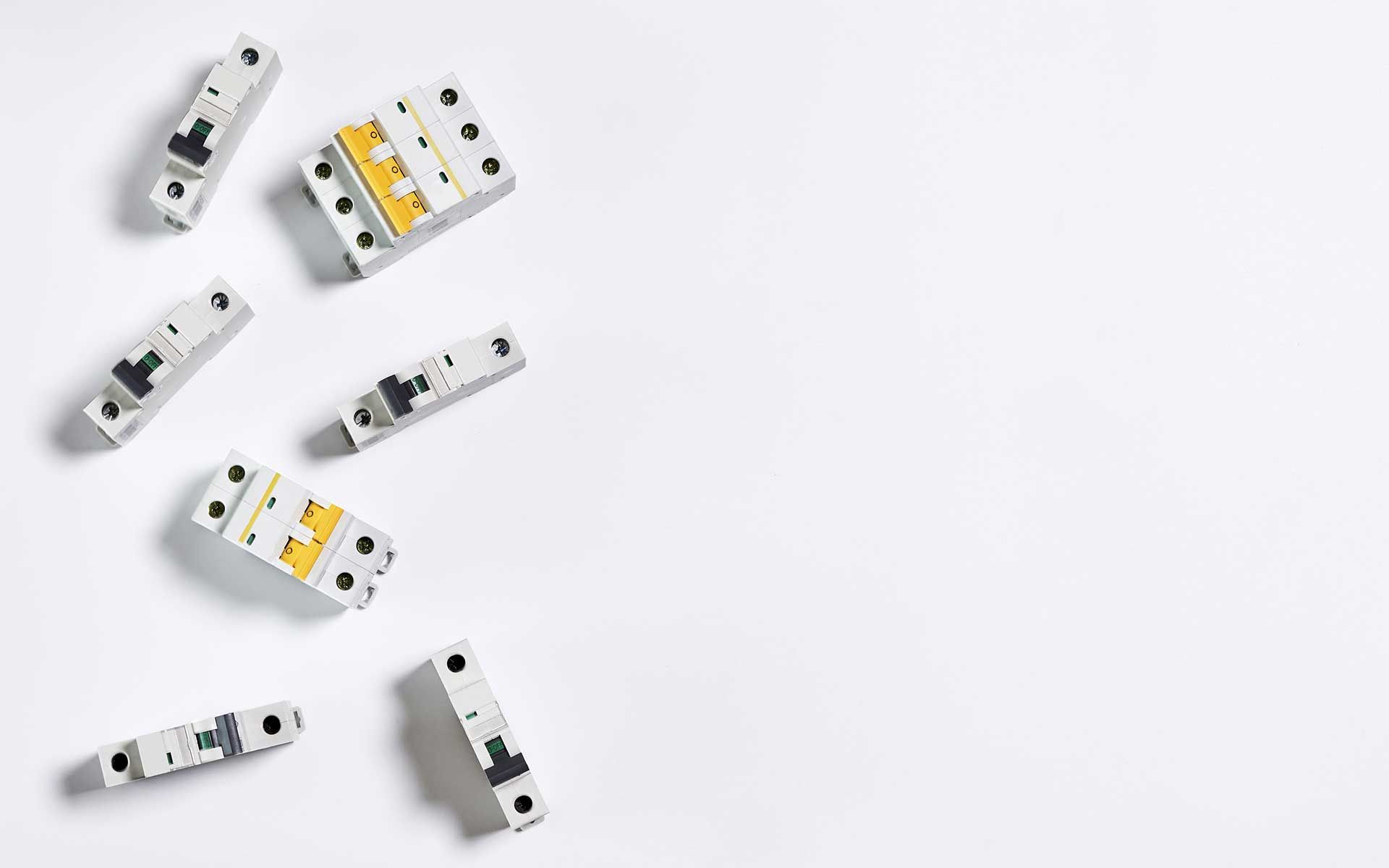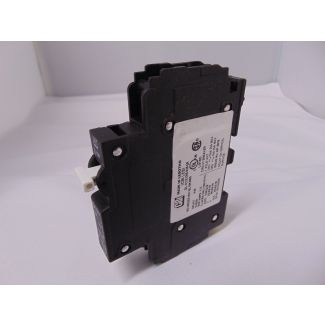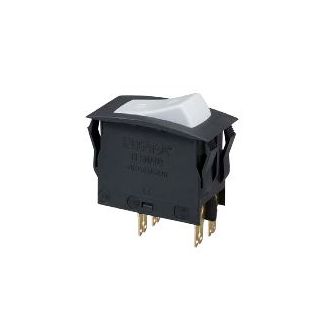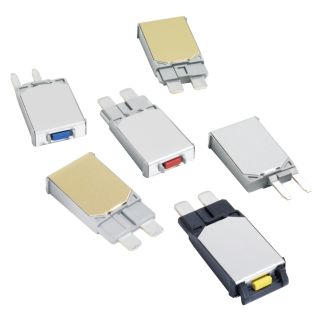Circuit breakers provide safety and protection against electrical hazards in electrical systems. Like a vigilant security guard monitoring a building, a circuit breaker watches over your electrical circuits. When the breaker detects any suspicious activity, such as excessive current or a potential electrical fault, the circuit breaker (like a security guard sounding the alarm) swiftly isolates the affected area to prevent electrical malfunctions that pose a risk.
Today’s post covers valuable information about circuit breakers' purpose and function, including everything to consider when selecting the appropriate breaker for electrical applications to ensure the safety and longevity of electrical systems in homes and businesses.
Understanding Circuit Breakers
The first step to selecting a circuit breaker is understanding what it is, how it works, and why it is critical for safely operating electrical systems. Let’s begin with the what and why before diving into the how.
Definition and Purpose
A circuit breaker is an automatically operated electrical device designed to protect electrical circuits from damage caused by overcurrent, which occurs when the electric current flowing through a circuit exceeds the intended level. Several factors can lead to overcurrent situations, and they are generally categorized into two main types: overloads and short circuits.
Overcurrents pose risks such as overheating wiring, damage to electrical components, electrical fires, and the potential for electrical shocks. However, circuit breakers can detect and interrupt the current flow in the event of an overcurrent, thereby protecting the electrical system and connected devices. Therefore, the circuit breaker’s primary function is to automatically interrupt the flow of an electrical current when it exceeds a predetermined threshold, preventing damage to the electrical components and wiring.
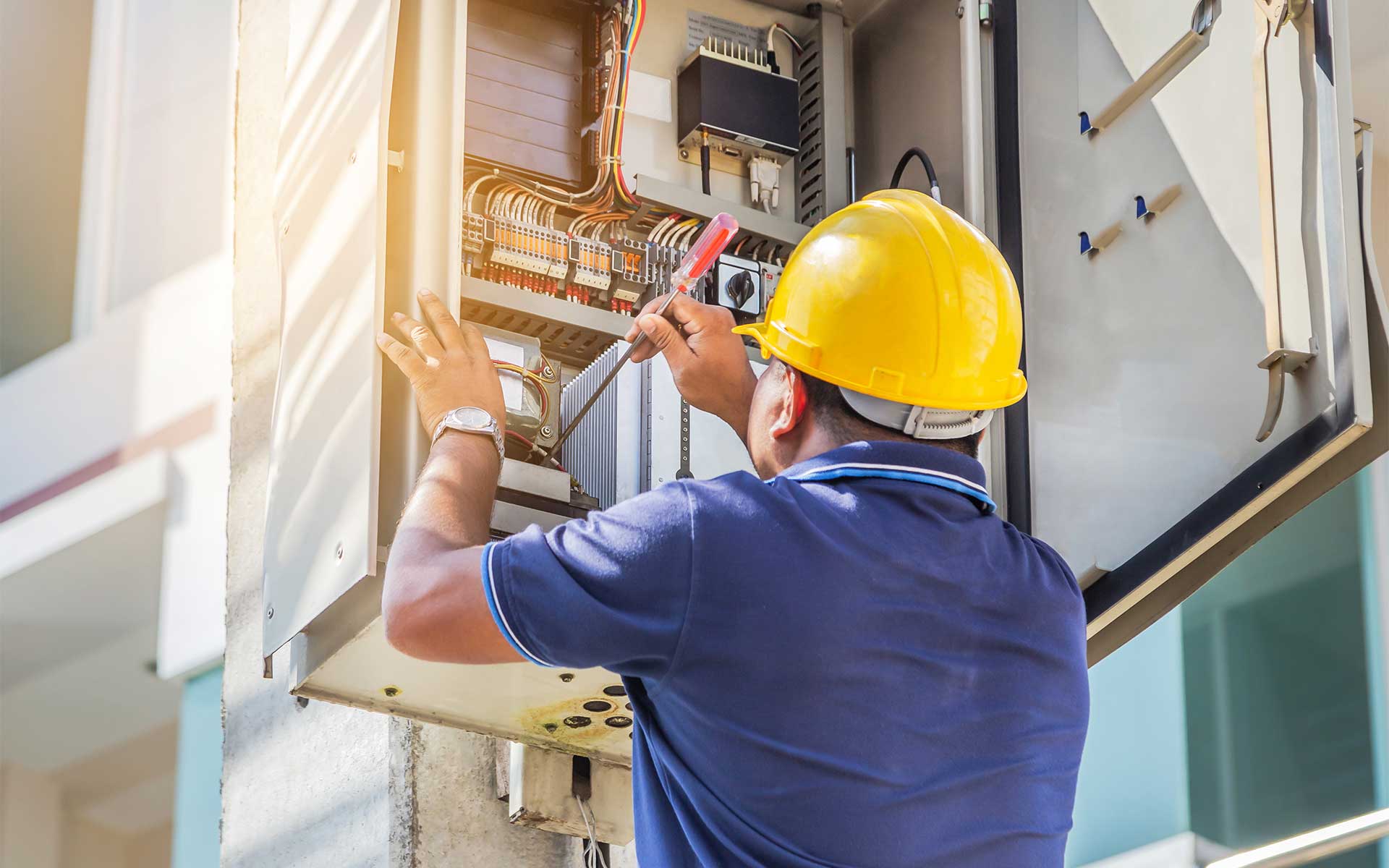

How Do They Work and How to Tell What Type of Circuit Breaker I Need?
Circuit breakers' specific design and characteristics can vary based on application requirements. However, the functionality is the same, i.e., when there’s an overload or a short circuit, the breaker cuts off the current to prevent damage or fire. Here’s a general breakdown of how circuit breakers function in electrical settings.
Normal Operation
Under normal operating conditions, the circuit breaker allows the flow of electrical current through the circuit without any interruption. In other words, the contacts of the circuit breaker remain closed, providing a continuous path for the current to move.
Monitoring Current
The circuit breaker continuously monitors the current flowing through the circuit. This monitoring can be based on different principles, including thermal, magnetic, or a combination of both.
Threshold Detection
If the current exceeds the rated capacity of the circuit breaker, indicating an overload or short circuit, the circuit breaker detects this condition.
Activation of Tripping Mechanism
The circuit breaker has a tripping mechanism that activates when an overcurrent is detected. The type of tripping mechanism can vary based on thermal or magnetic principles.
- Thermal Tripping - in thermal circuit breakers, a bimetallic strip is used. When the current exceeds the threshold, the strip heats up, causing it to bend or warp. This movement triggers the release of the latch, opening the contacts and interrupting the circuit.
- Magnetic Tripping - magnetic circuit breakers use a coil and a core. Sudden and high overcurrents create a magnetic field that pulls the core, releasing the latch and opening the contacts.
Opening of Contacts
When the tripping mechanism activates, the circuit breaker contacts open, interrupting the current flow through the circuit.
Arc Extinguishing
When the contacts open, an arc is formed due to the breaking of the electrical connection. Circuit breakers are designed to extinguish this arc to prevent damage to the contacts and surrounding components.
Fault Isolation
By opening the contacts, the circuit breaker isolates the faulty part of the circuit, preventing further damage and protecting the rest of the electrical system.
Manual Reset (Optional)
Some circuit breakers have a manual reset option. After the fault is addressed, the circuit breaker can be manually reset to restore the electrical connection.
Circuit Breaker Types
Circuit breakers are widely used in residential, commercial, industrial, avionic, military, and other electrical applications. Many types are available, each designed for specific applications and electrical systems.
Standard Circuit Breakers
Standard circuit breakers offer two common configurations: single-pole and double-pole. (A pole in the context of a circuit breaker refers to the number of conductors connected to it.)
- Single-pole breakers have one pole and are designed to interrupt the current flow in a single, ungrounded (hot) conductor. These breakers handle 120-volt circuits and usually have a 15 to 20-ampere rating, suitable for residential and light commercial applications.
- Double-pole breakers have two poles and are designed to interrupt the current flow simultaneously in two ungrounded (hot) conductors. These breakers are designed for 240-volt circuits and used for larger appliances and equipment, such as air conditioners and water heaters. Ratings typically range from 30 to 60 amperes.
Ground Fault Circuit Interrupters (GFCI)
GFCI circuit breakers protect against electric shock by breaking the circuit when a current difference between hot and neutral wires occurs. These circuit breakers are essential in areas with moisture, like bathrooms, kitchens, and outdoor spaces.
Arc Fault Circuit Interrupters (AFCI)
AFCI circuit breakers are critical in aircraft applications. They prevent fires by detecting and interrupting arc faults caused by damaged, overheated, or stressed electrical wiring or devices. Arcing faults occur when there is an unintended flow of electrical current across an air gap, leading to sparking or arcing. AFCIs provide additional protection against electrical fires, especially in areas where electrical wiring may be concealed or arc faults might not be immediately noticeable (such as with aircraft electrical applications).
Thermal
This circuit breaker operates on the principles of heat and temperature; i.e., when the current flowing through the circuit exceeds the designed capacity, generating heat, the thermal circuit breaker responds by interrupting the circuit. Thermal circuit breakers are commonly used in various electrical systems, from household appliances to aircraft control systems, particularly when overloads are more gradual.
Hydraulic/Magnetic
This circuit protection device combines hydraulic and magnetic principles for overcurrent protection. Combining the magnetic and hydraulic mechanisms allows for precise and adjustable trip characteristics, i.e., the circuit breaker can be designed to trip quickly in response to short-circuit conditions while providing a more delayed response to moderate overloads. Hydraulic/magnetic circuit breakers are used in various applications, including industrial equipment, machinery, power distribution panels, and avionic systems.
Specialized Types
These specialized circuit breakers are designed to meet the specific requirements and challenges of their respective applications in various industries and settings - examples include High Voltage Circuit Breakers, Solar DC Circuit Breakers, Oil Circuit Breakers, Generator Circuit Breakers, Air Circuit Breakers, and more.


Choosing a Circuit Breaker - Specifications and Selection Criteria
Selecting the correct circuit breaker for an electrical application involves considering various specifications and criteria to ensure proper protection, compatibility, and safety. Here are key specifications and selection criteria to keep in mind:
- Amperage Rating: Match the amperage rating of the breaker to the maximum current load of the circuit. Overrating can lead to circuit damage, while underrating will cause frequent tripping.
- Voltage Rating: Ensure the breaker's voltage rating is compatible with the circuit. For example, most residential breakers are rated for 120/240 volts.
- Interrupting Capacity: This is the maximum fault current the breaker can safely interrupt. Higher ratings are needed for circuits with the potential for higher fault currents.
- Physical Size: Circuit breakers must fit into your panel, so always check the panel's layout and breaker size to ensure compatibility.
- Compatibility with Electrical Panel: Use breakers designed for your panel's brand and model to ensure safety and compliance.
Choosing the Right Circuit Breaker - Safety Considerations and Compliance
Circuit breaker installations must adhere to strict safety considerations and comply with relevant electrical codes and standards to ensure electrical systems' safety, reliability, and proper functioning. Circuit breaker installations should be performed by qualified and licensed electricians or individuals with appropriate training and expertise, as incorrect installation or non-compliance can lead to safety hazards and legal issues.
The following are key safety considerations and compliance guidelines to consider during and after circuit breaker installations:
- National Electrical Code (NEC): The NEC is a widely adopted standard in the U.S. that provides guidelines for installing electrical systems, including circuit breakers. Compliance with NEC requirements is essential to ensure safety and code compliance.
- Local Electrical Codes and Regulations: Check and comply with local electrical codes and regulations. Local codes may have specific requirements that complement or modify national standards based on regional needs and conditions.
- Circuit Breaker Ratings: Ensure that the selected circuit breakers have the correct voltage and current ratings for the specific electrical system. Use circuit breakers with appropriate short-circuit current ratings (SCCR) to handle potential short-circuit currents.
- Proper Sizing: Always size circuit breakers appropriately for the connected loads. Avoid overloading circuits and select breakers with the correct current-carrying capacity based on the application.
- Coordination and Selectivity: Coordinate circuit breakers within a system to ensure proper selectivity. Coordination prevents unnecessary tripping of upstream breakers and allows for selective isolation of faults, minimizing downtime.
- Environmental Conditions: Consider the environmental conditions of the installation site. Ensure that circuit breakers are suitable for the temperature, humidity, and altitude conditions of the specific location.
- Protection Against Overloads and Short Circuits: Install circuit breakers to provide proper protection against overloads and short circuits by selecting the appropriate type of circuit breaker (thermal, hydraulic-magnetic, etc.) based on the application.
- Ground Fault Protection: Use Ground Fault Circuit Interrupters (GFCIs) for ground fault protection in areas where required by code.
- Arc Fault Protection: Install Arc Fault Circuit Interrupters (AFCIs) where required to protect against arc faults that can lead to electrical fires.
- Equipment Labeling: Properly label circuit breakers and electrical panels to clearly identify circuits, loads, and disconnecting means, which is especially critical during maintenance, troubleshooting, and emergency response.
- Installation Documentation: Maintain documentation of the circuit breaker installation, including specifications, ratings, and any modifications made during the installation process.
- Periodic Inspections and Maintenance: Conduct regular inspections and maintenance of circuit breakers to ensure proper functioning. Replace any damaged or worn-out breakers promptly.
- Lockout/Tagout Procedures: Follow lockout/tagout procedures when performing maintenance or servicing circuit breakers to prevent accidental energization. These procedures enhance worker safety during maintenance activities.
- Manufacturer's Instructions: Adhere to the manufacturer's instructions and guidelines for the installation, operation, and maintenance of circuit breakers. Manufacturer recommendations are crucial for ensuring proper performance and safety.
- Training and Awareness: Train personnel involved in circuit breaker installations and maintenance to ensure they know safety procedures, electrical hazards, and emergency response protocols.
Circuit Breaker Brands
Peerless Electronics is a full-service, authorized stocking distributor for leading manufacturers and suppliers of circuit breakers for various industries, including industrial electronics, aerospace, and military/defense. Browse our selection of leading circuit breaker manufacturers below. If you do not see what you need in stock, please contact us for help.
When it comes to protecting against electrical hazards, selecting the correct circuit breaker is vital for electrical safety. When in doubt, always consult a professional electrician who can guide your selection based on specific needs and ensure compliant installation.
If you have questions about circuit breakers or any other electrical components, don’t hesitate to reach out to our team of experts here at Peerless Electronics. We’re here to help!
Frequently Asked Questions About Choosing a Correct Circuit Breaker
What is a Circuit Breaker?
A circuit breaker is an electrical safety device designed to protect an electrical circuit from damage caused by overcurrent or overload. It automatically cuts off the electrical flow when it detects a fault condition.
How Do I Know Which Amperage Rating to Choose for My Circuit Breaker?
The amperage rating should match the maximum current load of the circuit it protects. Overrating can lead to undetected circuit damage - while underrating causes frequent tripping. Check the appliance's manual or consult with an electrician to determine the right amperage.
What is the Difference Between Single-Pole and Double-Pole Circuit Breakers?
Single-pole breakers are used for standard 120-volt circuits and are typically rated at 15-20 amperes, ideal for lighting and receptacle circuits. Double-pole breakers handle 240-volt circuits and are used for larger appliances, like air conditioners and dryers, with ratings usually between 30-60 amperes.
Why are GFCI Breakers Important?
Ground Fault Circuit Interrupter (GFCI) breakers are crucial for preventing electric shock. They are designed to cut off electrical power when they detect a ground fault, which is especially important in wet areas like bathrooms and kitchens.
Can I Install a Circuit Breaker Myself?
While some people have the skills to do it themselves, installing a circuit breaker involves an understanding of electrical systems and local codes. It is recommended to hire a professional electrician to ensure safety and compliance with regulations.
How Often Should Circuit Breakers Be Replaced?
Circuit breakers don't have a set expiration date, but they should be replaced if they show signs of wear, such as not staying reset or feeling hot to the touch. Regular inspections by a qualified electrician can help determine if they need replacing.



